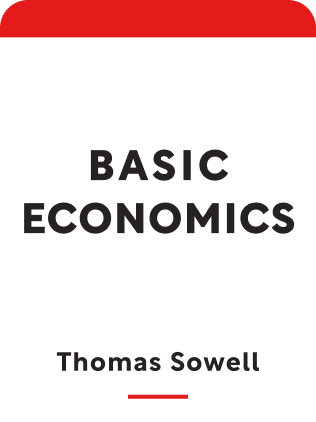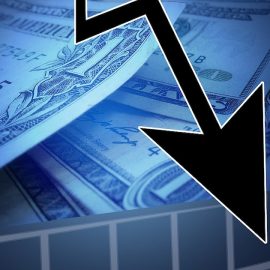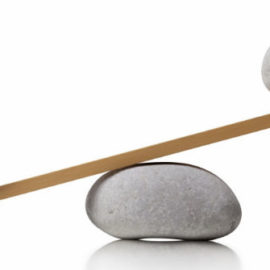

This article is an excerpt from the Shortform book guide to "Basic Economics" by Thomas Sowell. Shortform has the world's best summaries and analyses of books you should be reading.
Like this article? Sign up for a free trial here .
How is the price of labor determined in an economy? How do economies regulate labor compensation and working conditions?
Human labor is a resource like any other. However, unlike in other resource markets (where goods and services are priced efficiently without the need for central control), there are artificial changes to labor prices in the form of artificial floors (e.g. minimum wage laws, mandatory benefits, job security, working conditions, collective bargaining, etc). As a result, the price of labor is above what it’d in free competition. This causes a surplus of supply and less demand for labor.
In this article, you’ll learn about the economics of the labor market and how artificial floors affect the price of labor in an economy.
Minimum Wage Laws
Even though minimum wage laws are meant to benefit workers, they can lead to increased unemployment. The real minimum wage is always zero. With artificially higher wages, employers tend to use more capital as a resource. Rather than hiring extra people, employers get more mileage through existing workers through overtime or by investing in technology to make workers more efficient.
Countries with no minimum wage laws like Switzerland and Singapore tend to have lower unemployment rates of 2-3%. Furthermore, countries with no minimum wage laws and fewer mandatory benefits tend to have shorter periods of unemployment and faster turnover.
Because of the surplus in supply, buyers (employers) can be more selective about who they hire. This typically disadvantages younger, less skilled, and minority workers, who become delayed in acquiring job skills and experience and thus stifle their lifetime income. Indeed, minimum wage laws were once explicitly advocated to reduce competition with minorities, who were willing to work for less (such as African-Americans in the United States in the 1930s).
Labor unions benefit from minimum wage laws, since experienced unionized workers tend to displace younger, less skilled workers as the minimum wage goes up. (Shortform note: imagine that a young worker would cost $8/hr in a market, but a skilled worker would cost $15/hr. An employer could make the decision accordingly. But if the minimum wage became $14/hr, the cost difference between the two workers shrinks to $1, and it becomes much more compelling to hire the skilled worker.)
Politically, minimum wage laws seem superficially beneficial to voters, since the wage is an obvious first-order improvement, but unemployment is a more subtle second-order problem that isn’t tied to minimum wage laws. (Shortform note: furthermore, there are likely vicious cycle effects wherein the employed are more likely to vote, and the employed are more likely to support minimum wage laws, thus further increasing unemployment and entrenching the voting power of the employed.)
If there were no minimum wage laws in the United States, more people would be employed, with the median person earning lower wages than with minimum wage laws. This “spreads employment more evenly.” And the workers still retain free choice – if they were clearly better off not working for the employer at a lower wage, they would choose not to work. Instead, minimum wages tend to make low-wage workers worse off by closing off one of their already limited options.
Working Conditions and Benefits
The above reasoning applies to mandatory working conditions, benefits, and job security laws. These costs are factored into the total cost of hiring workers and tend to increase cost per worker above free market levels.
For instance, for job security laws like limiting situations where termination is allowed, firing may be so costly that it’s easier not to hire in the first place. These laws save the job of existing workers, but at the cost of reducing flexibility of the economy as a whole. Even in technological disruptions that obviate jobs, the workers flow into more productive roles for the economy, such as agricultural workers turning to manufacturing.
Politically, these policies are popular because they gain more votes from workers than it loses among employers, and they cost the government nothing.
All these are reasons that unemployment may not decrease as an economy rises out of a recession – an employer may simply find that working existing workers overtime is cheaper than the overhead of hiring new workers (in training and benefits).
Labor Unions
In discussing the economics of labor market, it is also important to consider the role of labor unions in setting wages.
Labor unions tend to set wages higher than what would exist in open competition.
Say that manufacturers would pay $15/hr for workers at market rates. The union bargains to increase pay to $20/hr. Now the employer will employ only people who meet the minimum bar of productivity at $20/hr; this may mean driving some less qualified workers to their second-best option for $12/hr. This is a loss to the economy as a whole, since scarce resources are not being allocated to where productivity is highest, and capital is required to increase worker productivity to $20/hr.
As an example, auto unions in the United States raised auto worker conditions, but they also raised the price of cars and made American cars less competitive with Japanese cars. Eventually Japanese manufacturers built plants in the US, which became mostly non-union. This is part of a growing skepticism about unions’ economic effects, since highly unionized workforces became correlated with economic declines and unemployment in industries. Employers have remained non-union by paying their workers at least as much as unionized workers receive.
The unions remaining in the United States are often in the public sector, as with teachers. Public managers and politicians spend taxpayer money, not their own money, and so have little incentive to resist union demands. Furthermore, often being monopolies, government agencies lack competition that would force efficiency.
Occupational Licensing
Certain professions like doctors, beauticians, and taxi drivers require licenses to practice. This reduces competition by raising the bar for new entrants to the industry.
Surprisingly, the demand for requiring licenses for practitioners has usually come not from the public but rather from existing practitioners. This protects the incumbents in the industry from competition from new entrants. One signal of this is that new legislation often exempts existing practitioners – if the law were actually meant to protect the public, then bad actors who are existing practitioners should certainly be weeded out.
Child Labor Laws
Once designed to protect children from vulnerable physical working conditions, child labor laws now keep youth out of office jobs that are physically innocuous. Thomas Sowell argues that educators and labor unions also have incentives to keep children in school for longer and out of the workforce, respectively, thus securing their own jobs at the expense of allowing youth to gain work experience.

———End of Preview———
Like what you just read? Read the rest of the world's best book summary and analysis of Thomas Sowell's "Basic Economics" at Shortform .
Here's what you'll find in our full Basic Economics summary :
- Why we use money, rather than bartering our services with each other
- Why some nations prosper, while others stay poor despite vast natural resources
- How rent control might actually reduce housing supply and quality






